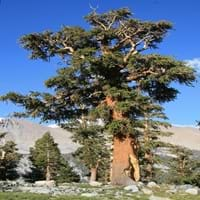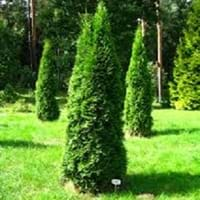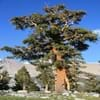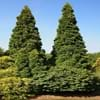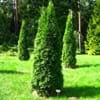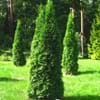Life Span
Perennial
Perennial
Type
Needled or Scaled Evergreen
Needled or Scaled Evergreen
Origin
Europe, Russia/Siberia, Western Asia
North America, Canada
Types
not available
Not Available
Habitat
Alpine Meadows, Mediterranean region, Rock outcrops, Slopes, Woodlands
Forest edges, Hardwood forests, Hillside, Roadsides, Woods
USDA Hardiness Zone
5-8
2-7
AHS Heat Zone
Not Available
7-1
Sunset Zone
1 - 7,15 - 17
A2, A3, H1, H2, 1a, 1b, 2a, 2b, 3a, 3b, 4, 5, 6, 7, 8, 9, 15, 16, 17, 21, 22, 23, 24
Habit
Pyramidal
Cushion/Mound-forming
Flower Color
Not Available
Brown
Flower Color Modifier
Not Available
Bicolor
Fruit Color
Not Available
Light brown
Leaf Color in Spring
Green
Green
Leaf Color in Summer
Green, Blue Green
Green
Leaf Color in Fall
Green, Blue Green
Green
Leaf Color in Winter
Blue Green, Gray Green
Green
Leaf Shape
Needle like
Scale-like imbricate
Plant Season
Spring, Summer, Fall, Winter
Spring, Summer, Fall, Winter
Sunlight
Full Sun
Full Sun
Type of Soil
Loam, Sand
Clay, Loam, Sand
The pH of Soil
Acidic, Neutral
Acidic, Neutral
Soil Drainage
Average
Average
Bloom Time
Late Summer, Spring
Early Spring, Late Spring
Tolerances
Drought
Drought
Where to Plant?
Ground
Ground
How to Plant?
Cuttings, Seedlings
Seedlings, Transplanting
Plant Maintenance
Medium
Medium
Watering Requirements
Keep ground moist, Keep the Soil well drained, Medium, Requires regular watering
Requires watering in the growing season, Water Deeply, Water twice a day in the initial period
In Summer
Lots of watering
Lots of watering
In Spring
Moderate
Moderate
In Winter
Average Water
Average Water
Soil pH
Acidic, Neutral
Acidic, Neutral
Soil Type
Loam, Sand
Clay, Loam, Sand
Soil Drainage Capacity
Average
Average
Sun Exposure
Full Sun
Full Sun
Pruning
Prune once the plant is tall enough, Prune to stimulate growth
Remove damaged leaves, Remove dead branches, Remove dead leaves
Fertilizers
All-Purpose Liquid Fertilizer
All-Purpose Liquid Fertilizer
Pests and Diseases
Adelgids, Bark beetles, Blister Rust, Canker, Sawfly Larvae, Spruce spider mite, White pine weevil
Red blotch
Plant Tolerance
Drought
Drought
Flowers
None
Insignificant
Flower Petal Number
Single
Single
Fragrant Bark/Stem
No
Yes
Foliage Texture
Medium
Medium
Foliage Sheen
Not Available
Matte
Attracts
Birds, Insects
Birds
Allergy
Not Available
Asthma
Aesthetic Uses
Beautification, Decorating walls, Ground Cover, Landscape Designing, Mixed Border, Showy Purposes, Used for decorating walls, fences, gates, hedges, etc., Used for making hedges
Beautification, Showy Purposes
Beauty Benefits
Not Available
Not Available
Environmental Uses
Air purification
Air purification
Medicinal Uses
Not Available
constipation, Headache
Part of Plant Used
Not Available
Whole plant
Other Uses
Application in Furniture, Condiment, Food for animals, Paper pulp, Showy Purposes, Used as Christmas Tree, Used as Ornamental plant, Used for its medicinal properties, Used for Landscaping
Air freshner, Oil is used in perfume, soaps, creams, etc., Used as an insecticide
Used As Indoor Plant
No
No
Used As Outdoor Plant
Yes
Yes
Garden Design
Feature Plant, Screening, Wind Break, Shade Trees
Edging, Foundation, Hedges, Mixed Border, Rock Garden, Wall
Botanical Name
Pinus balfouriana
THUJA occidentalis 'Hetz Midget'
Common Name
Foxtail pine
Northern White Cedar
Eastern Arborvitae
In Hindi
foxtail pine
अमेरिकी Arborvitae
In German
foxtail Kiefer
Lebensbaum
In French
sétaire pin
Amérique Arborvitae
In Spanish
pino de cola de zorra
Americana Arborvitae
In Greek
αλωπέκουρου πεύκο
αμερικανική Arborvitae
In Portuguese
pinho foxtail
Arborvitae americano
In Polish
włośnica sosny
Amerykański Tuja
In Latin
panicum pinus
American Arborvitae
Phylum
Coniferophyta
Not Available
Class
Pinopsida
Pinopsida
Family
Pinaceae
Cupressaceae
Clade
Not Available
Not Available
Tribe
Pineae
Not Available
Subfamily
Pinoideae
Cupressoideae
Importance of Foxtail pine and American Arborvitae
Want to have the most appropriate plant for your garden? You might want to know the importance of Foxtail pine and American Arborvitae. Basically, these two plants vary in many aspects. Compare Foxtail pine and American Arborvitae as they differ in many characteristics such as their life, care, benefits, facts, etc. Every gardener must at least have the slightest clue about the plants he wants to plant in his garden. Compare their benefits, which differ in many ways like facts and uses. The medicinal use of Foxtail pine is Not Available whereas of American Arborvitae is constipation and Headache. Foxtail pine has beauty benefits as follows: Not Available while American Arborvitae has beauty benefits as follows: Not Available.
Compare Facts of Foxtail pine vs American Arborvitae
How to choose the best garden plant for your garden depending upon its facts? Here garden plant comparison will help you to solve this query. Compare the facts of Foxtail pine vs American Arborvitae and know which one to choose. As garden plants have benefits and other uses, allergy is also a major drawback of plants for some people. Allergic reactions of Foxtail pine are Not Available whereas of American Arborvitae have Asthma respectively. Having a fruit bearing plant in your garden can be a plus point of your garden. Foxtail pine has no showy fruits and American Arborvitae has no showy fruits. Also Foxtail pine is not flowering and American Arborvitae is not flowering . You can compare Foxtail pine and American Arborvitae facts and facts of other plants too.
